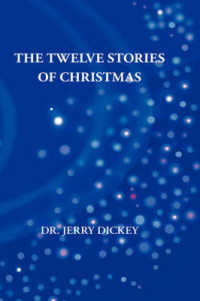Full Description
Ethical Practices for Skilled Movement Behaviour presents the first collection of original contributions that focus on how the retirement experiences of skilled movement performers influence how they choose to provide and orient themselves towards current performers under their tutelage, how the retirement experiences of skilled movement performers - turned coaches/instructors/practitioners influence their current practice.
The value of this cutting-edge book lies in its theoretical breadth and accessibility. Authors will draw upon contemporary social theorists from a range of anti-positivist paradigmatic perspectives. This edited collection is the first of its kind to consider how sociologically informed accounts of the complex experiences and implications of retirement for the post-performance instructional practices of former skilled movement performers. The invited contributions embrace a marriage of creative narrative writing practices with their own chosen social theory to communicate their experiences of retirement, exercise, and wellbeing and how these experiences have influenced their thoughts about the production of performers.
Ethical Practices for Skilled Movement Behaviour provides a progressive and accessible means of representation to provide a sensitive, enjoyable, and expressive account of the residual impact of a skilled movement performance career, particularly as it relates to their ongoing orientation and will be of key interest to scholars, researchers and students in the area of Sport Transition and Retirement, Sport Sociology and Sport Coaching.
Contents
List of Tables and Figures
Foreword
Preface
Chapter 1: Introduction. Luke Jones, Zoë Avner & Dr Allison Jeffrey.
Chapter 2: Territorialising and Re-Territorialising Coaching Practice. Christian Bjorndahl.
Chapter 3: Relations With Environments: A Shared Critical Autoethnography on Becoming-With Mountains. Nida Ahmad & Allison Jeffrey.
Chapter 4: Interrogating Moving Histories as Part of Care-Ful Pedagogical Practice: Enlisting New Materialisms to Navigate the Kinesiology Classroom. Marianne Clark.
Chapter 5: Towards More Ethical and Sustainable Sporting and Coaching Practices. Göran Gerdin.
Chapter 6: Permeating Change Post Retirement: From Disciplined to Foucauldian Post-Structural Coach Developer. Clayton Kuklick And Gonzalo Obando.
Chapter 7: Mapping The Materialized Body in Motion. Pirkko Markula.
Chapter 8: 'Train Don't Strain!': Mastering Frailty in An Aging Running Body. P. David Howe.
Chapter 9: Illuminating The Ties That Bind: Ballet Teaching Methods Re Envisioned for Longevity of Student Engagement. Emily Noton.
Chapter 10: When Football Is Not the Priority: The Relational Challenges of Coaching in Semi-Professional Football. Darryn Stamp.
Chapter 11: When Our Survival Is Not Given: The Arts and Athletics of Remaining Alive. Danielle Peers & Nathan Fawaz.
Chapter 12: Arlene and the Body Machines. Joseph Mills.
Chapter 13: Conditioned Spaces, Conditioned Thoughts? Reflecting On How the Architectures of Space Mediate Reflexivity and Action in Performance Sport. Simon Phelan.
Chapter 14: Conclusion. Luke Jones, Zoe Avner & Allison Jeffrey.
References
Index





